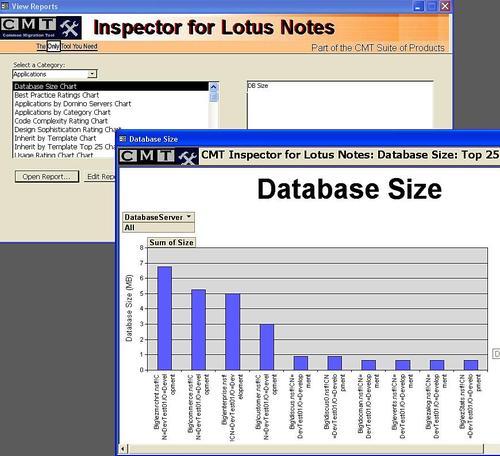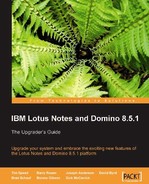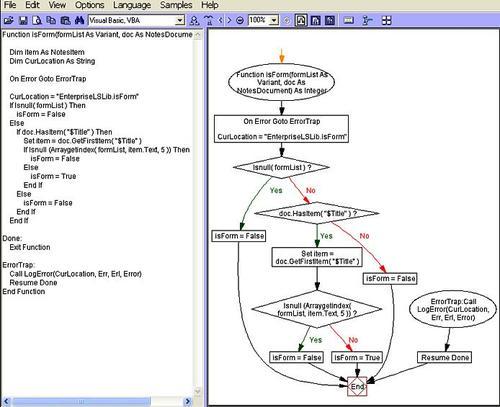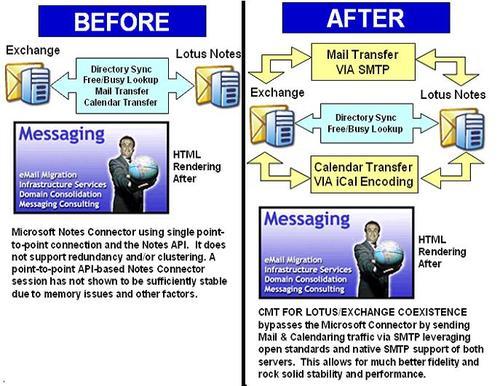Your Domino infrastructure gets more complex every day, and effectively managing through that complexity can save your firm time and money. Before making upgrades/additions/wholesale changes to your Domino environment, gain the knowledge you need regarding what legacy applications exist today, with granular information on critical metrics such as usage, access, and attachments. Easily identify opportunities for improved storage and security policies based on real-world results that point to changed business needs, falling usage/access, and so on. CMT Inspector provides the inspection and analysis you need to not only justify the legacy environment, but also effectively plan for future investment options. CMT Inspector provides the following functionalities:
- Usage reports
- Security reports
- Server statistics
- E-mail statistics
- Code search and comparison
- Content analysis
- Application design analysis
- User surveys
- Application Template Matching
- Notes Upgrade Validation
- Extensive Code Validation Rules Engine
- Code flowcharting
- Export to access
- Design and Sophistication Indexes
- Express and advanced settings
- Usage analysis
- Redundant failover logic

CMT Inspector contains an extensive Rules Filtering Engine with hundreds of rules that can be leveraged to find out if your applications will work when you upgrade. These rules can be modified and updated based on your environment. Furthermore, unlike simple searching that is performed by other products, CMT Inspector Rules can be tied to code snippets, which can be executed to give you an even better understanding of the code in your Notes environment. The following figure shows the Code Inspector at work:

CMT Inspector comes with an extensive collection of reports that can be automatically generated. Furthermore, all data can be exported to Microsoft Access for further reporting and querying. This means that almost any report can be generated on the fly.

You have business-critical information stored in Exchange Public Folders. You have to migrate to Lotus Notes, but, how do you migrate the data in the Public Folders?
Making your mail migrations from Microsoft Exchange to Lotus Domino easier is a snap with Binary Tree's CMT for Public Folders. This solution provides a simple and user-friendly means of migrating a public folder hierarchy to a single database.
The data in a Microsoft Exchange Public Folder often has significant value that has been protected with permissions, based on the identity stores in Exchange's directory. CMT for Exchange Public folders was created to help companies recover the intellectual capital often found in Public Folders. CMT not only takes data from the Public Folders, but can also mimic the permissions that existed on the Exchange servers in brand new Domino databases. CMT migrates the standard Exchange document types, including mail messages, calendar events, journal items, tasks, and notes. If your Public Folders contain forms that have been modified to include additional fields and data types, the CMT tool can be customized to migrate this data, as well.
The Binary Tree Common Migration Tool (CMT) migrates data from one e-mail system to another. The tool can be used to migrate from numerous e-mail systems to Lotus Notes, and like the DUS tool, CMT has the ability to migrate both Server-based data and end user-based data.
Binary Tree's Common Migration Tool for Notes builds on 14 years of outstanding e-mail and calendar/schedule migration solutions from Binary Tree. To date, millions of users world-wide have been migrated to Lotus Notes with Binary Tree's CMT for Notes tool.
CMT for Notes offers several business benefits:
- An enterprise migration solution that can manage large migrations (up to 50,000 users have been migrated at one time). There is no limit to the number of users that can be imported from a source directory.
- Wizards set up specific functions, such as importing users, registration to the Domino directory, the end user migration, and the server-to-server migration.
- The ablility to create mail files during the registration process.
- Date filtering for migrating mail, calendar, and tasks during an Exchange server-to-server migration.
- The process can be rolled out in two steps: user registration and user migration.
- Customized data types for migration that also include mail, calendar, notes, journal, tasks, and contacts, depending on individual needs, space, and time.
- It is possible to schedule users and/or groups to migrate at specific times, thereby limiting network load and support calls.
- Migrations do not require end users. The Administrator can perform the migration, cutting down on your IT department's time and expense.
- Detailed logs with extensive error reporting help administrators identify, interpret, and resolve issues.
By off-loading most of the traffic from the Microsoft Exchange Notes Connector, Binary Tree's CMT for Coexistence yields a more stable and reliable connection between Lotus Notes and Microsoft Exchange.
The most popular and highly functional connectivity solution between Microsoft Exchange and Lotus Notes environments is the Notes Connector for Microsoft Exchange. This solution addresses e-mail, calendar, scheduling and task data exchange, automated directory synchronization, and free/busy lookup between Microsoft Exchange and Lotus Notes environments.
To overcome issues reported by many customers using the Microsoft Notes Connector, Binary Tree's solution greatly enhances fidelity of mail exchange and improves connectivity reliability. This is accomplished by a series of configuration and programmatic changes in the environment.
iCal is supported with the advent of Exchange 2000 and Notes 6. iCal is the standard for the encoding of a calendar messages in SMTP format. This allows e-mail and calendaring to be sent via SMTP, which greatly decreases the stress on the Microsoft Connector, improving data fidelity.
CMT for Coexistence offloads all mail traffic from the Microsoft Notes Connector using SMTP and MIME encoding, effectively bypassing the inefficient Rich Text conversion used by the Microsoft Exchange Notes Connector. MIME encoding is much more efficient, preserving 100% fidelity.
CMT for Coexistence offloads all calendar traffic by encoding the message in iCal format and passing it via SMTP, instead of through the Microsoft Notes Connector.
Your domain infrastructure is a vital asset, and one that should be protected. Your IT environment is unique, which means that you need something designed with adaptability in mind.
Enter Binary Tree's CMT for Domains, Users, Servers, and Desktops. It is a solution that expedites the conversion between platforms, while diminishing the impact on your IT resources. A user-friendly administrator tool requiring virtually no end user interaction, CMT for Domains, Servers, Users, and Desktops will enable you to automate the entire migration lifecycle in minutes.
Utilizing CMT for Domains, Servers, Users, and Desktops, the following processes can be accomplished with the click of a button:
- Entire environment and user audit: Wholly automates the replacement of users' present naming structure to the new one.
- All-encompassing jurisdiction of the migration process: Grants the Administrator a complete overview of the migration life-cycle, providing meticulous data with process information based on migration phases or users.
- Instigates the rename of multiple users to the new hierarchical name/upgrade: The practice of migrating and/or consolidating Lotus Notes Domains is habitually escorted by altering end users' hierarchical naming structures. Commonly, a Lotus Notes Administrator performs the process of Lotus Notes Domain migration by using a multifaceted, lingering process provided by Lotus. CMT for Domains, Users, Servers, and Desktops condenses this process, accomplishing the task quickly and efficiently, but with the minimal amount of effort.
- Notes desktop update: Programmed as an e-mail message containing a button for each user to click, users' desktop information (server names for databases, user accesses, mail file and personal address book, location documents, connection documents, and so on) are automatically updated to the new infrastructure information with one click.
- Notes port: Runs on the Domino server and by design, replaces all reference to each migrated user's old infrastructure information with the new one in the users mail database. (This includes fields in mail messages, calendar, meetings, and to-dos.)
Additionally, you can:
Never before has a consolidation of multiple Lotus Notes Domains been more straight-forward. CMT for Domains, Users, Servers, and Desktops consists of everything a Lotus Notes Administrator needs to move users from an existing domain to a new one. Furthermore, as a result of the migration using CMT, users will appear to have always lived on the new domain.



